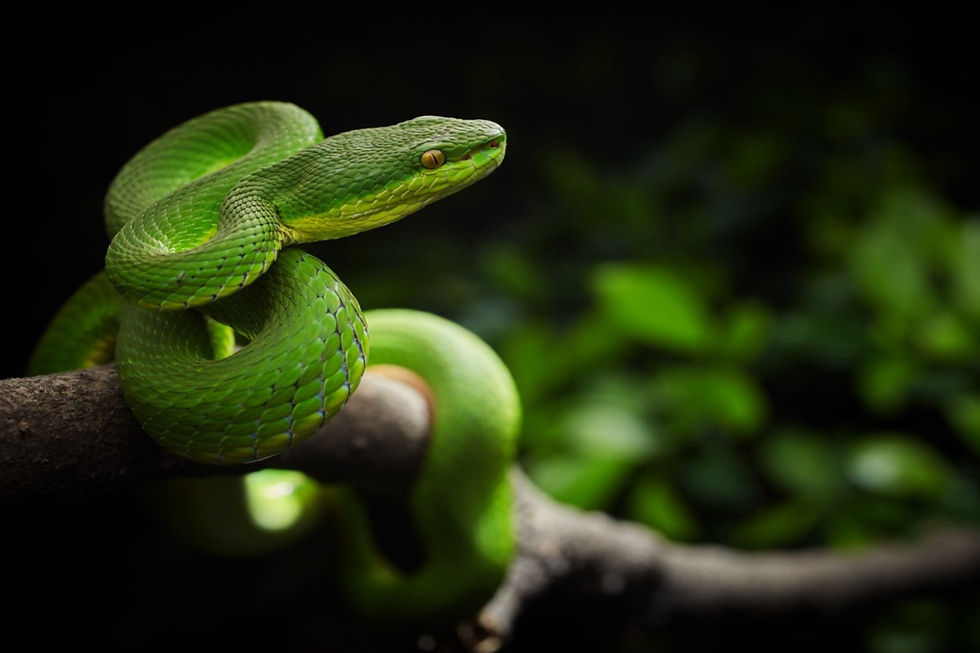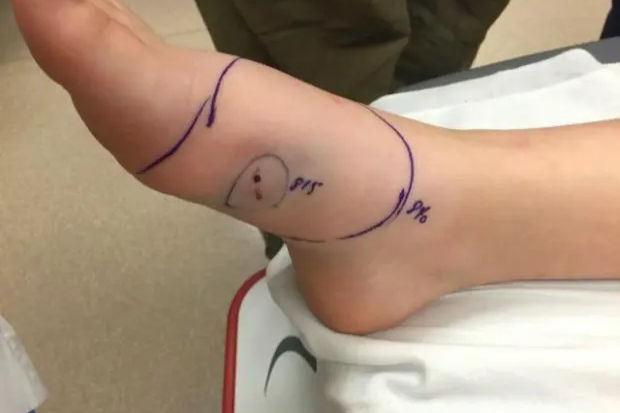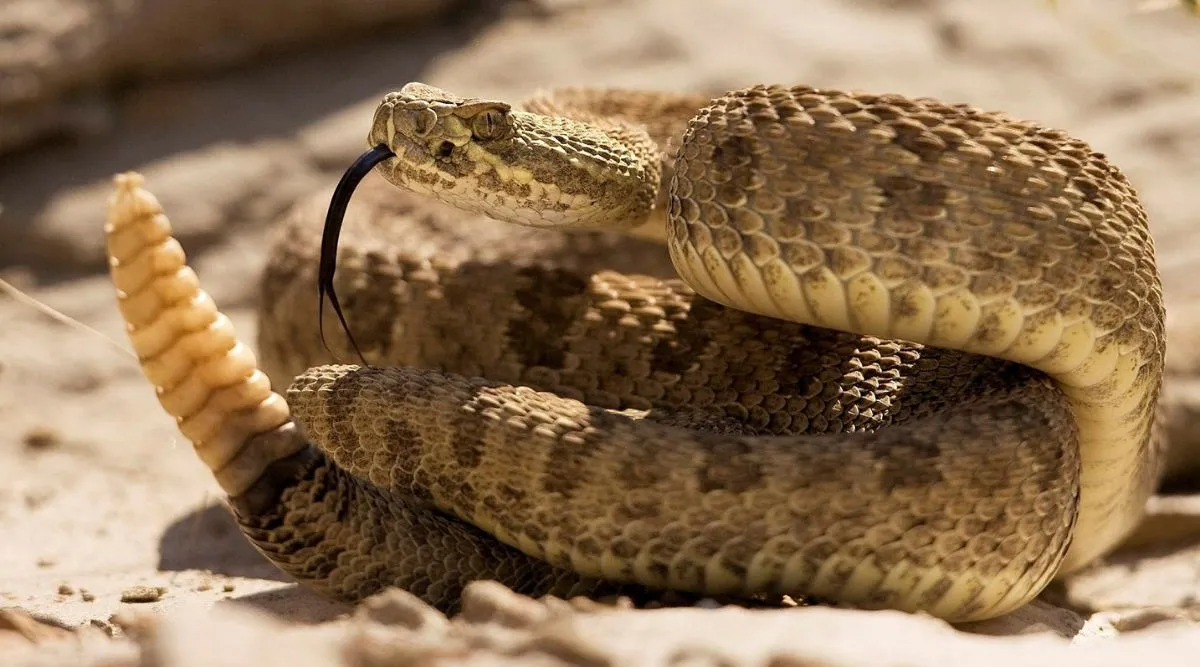Treating Snakebites in The Wilderness
- Andy Dorsett
- Jun 4
- 5 min read

Encountering a snakebite in the wilderness can be a daunting and potentially life-threatening situation for any adventurer. With various species like Elapids and Vipers posing different risks with neurotoxic, hemotoxic, and cytotoxic venoms, knowing the right steps to take is crucial. From marking the bite site and monitoring symptoms closely to understanding what not to do, navigating a snakebite emergency requires quick thinking and informed actions. In this comprehensive guide, we will delve into survival strategies and treatment protocols for snakebites, equipping adventurers, medical students, expedition leaders, and wilderness enthusiasts with the essential knowledge to handle this perilous scenario effectively.
Diverse Habitats of Snakes
Snakes inhabit a wide range of environments, making encounters possible in various settings. They are found in forests, deserts, wetlands, and even in urban areas. Adaptability is a key trait of snakes, allowing them to thrive in different climates and conditions. It's common to find snakes basking on rocks to regulate their body temperature or hiding under foliage to ambush prey. Awareness of the habitat preferences of different snake species is important. For example, Elapids often favour warmer regions and can be located near water sources, while Vipers might be more common in dry, rocky areas. Being knowledgeable about these habitats is crucial for outdoor enthusiasts to recognize potential snake territories and exercise caution when navigating through these areas. Always watch your step and check your surroundings, especially when in known snake habitats.
Identifying Dangerous Snake Species
When exploring the wilderness, it's pivotal to know how to identify dangerous snakes to prevent or properly address bites. Dangerous species often have distinctive features, such as the shape of the head, colour patterns, and the presence of fangs. Elapids, which include cobras and mambas, typically have smooth scales and elongated heads. Meanwhile, Vipers, recognizable by their triangular heads and keeled scales, possess long, hinged fangs that they use to inject venom. Learning these identifiers can help adventurers discern non-venomous snakes from those that are hazardous. While not all snake encounters will lead to bites, understanding which species pose a threat can significantly reduce panic and inform the right course of action if a bite does occur. Remember, treat every snake with respect and maintain a safe distance, as this is the best way to avoid an unwanted interaction.
Cobra Rattlesnake
Snakebite Treatment in the Wilderness
Immediate Response to a Snakebite
The initial response to a snakebite is critical. If bitten, the first step is to stay relaxed, keep the casualty calm and calmly move away from the snake to prevent further bites. Do not attempt to capture or kill the snake, as this can increase your risk of additional bites. It would be helpful if you could make a note of the colour, size, and head shape of the snake along with the direction it headed off. Once at a safe distance, sit down to prevent a fall that could occur if the venom affects your blood pressure. Quickly remove jewellery and tight clothing from the affected limb before swelling starts. Mark the bite site with a pen, noting the time of the bite, outline any swelling, and record symptoms and any changes roughly every 30 minutes. Do not cut the wound or attempt to suck out the venom. It's essential to keep the bitten limb immobilized in a natural resting position if possible. Once again keep the casualty calm and minimize movement and physical exertion.
PRESSURE BANDAGE
This is a tricky subject and much of the time you won’t be able to confidently identify the species. In this case, if there is no initial swelling or blistering apply a pressure bandage not tighter than you would for a sprained ankle. Leave extremities free and any signs of swelling or diminished capillary refill requires adjustment or removal of the bandage. Monitoring, as always, is key.
Prioritise seeking medical help or evacuate to the nearest medical facility that deals with snake bites as quickly as possible, without resorting to panic or rushed movements that can accelerate venom circulation. (see below for info on allying a pressure bandage All snakebites must be taken to hospital.
Recording Symptoms and Progression
Following a snakebite, accurate recording of symptoms and their progression is a key part of the treatment process. Use a pen to circle the bite site on the skin and note the time of the bite next to it. As time passes, mark the edges of any swelling or redness and list symptoms such as pain levels, changes in skin colour, and sensations like tingling or numbness. Update this information at least every 30 minutes. This visual and written record can be vital for medical professionals to determine the severity of envenomation and appropriate treatment. Additionally, it can provide a timeline of the venom's effects on your body, helping with the diagnosis even if the snake species is unknown. Stay as still as possible to slow the spread of venom and keep the record accessible for when you reach medical assistance.

Administering Medication
Administering first aid after a snakebite should be done with care. If symptoms of anaphylaxis occur, such as swelling of the face, mouth, or throat, or difficulty breathing, immediately use an epinephrine autoinjector if available. Avoid giving the person any medications, especially NSAID pain relievers like aspirin or ibuprofen, as they can worsen bleeding. For neurotoxic snakebites, where the venom affects the nervous system, apply a pressure-immobilisation bandage to slow the spread of venom. This is not recommended for bites from vipers, which can cause severe swelling and tissue damage. If unsure of the snake species, the best course of action is to immobilise the bitten area in a comfortable position and avoid any tight bandaging. Above all, the priority is to get the person to a hospital as quickly and safely as possible for anti-venom treatment.
Snakebite Myths and Misconceptions
Dangerous Missteps to Avoid
In the crucial moments after a snakebite, it's important to avoid certain dangerous actions that can worsen the situation. A positive identification of the snake is less critical than you might think, as treatment can be based on symptoms rather than species.
Do Not attempt to capture or photograph the snake, as this increases the risk of additional bites.
Do Not apply ice to the bite, as it can lead to further tissue damage, especially with viper bites
Do Not use any local remedies suggested but native people of the area
Do not use a tourniquet or cut into the bite site, as these practices can cause more harm. Splinting the limb is also debatable; if you choose to do so, ensure it's not too tight and that the limb is kept in a neutral position. The best approach is to focus on preventing the spread of venom and getting to a medical facility for proper treatment.
How to Apply a Pressure Bandage







Comments